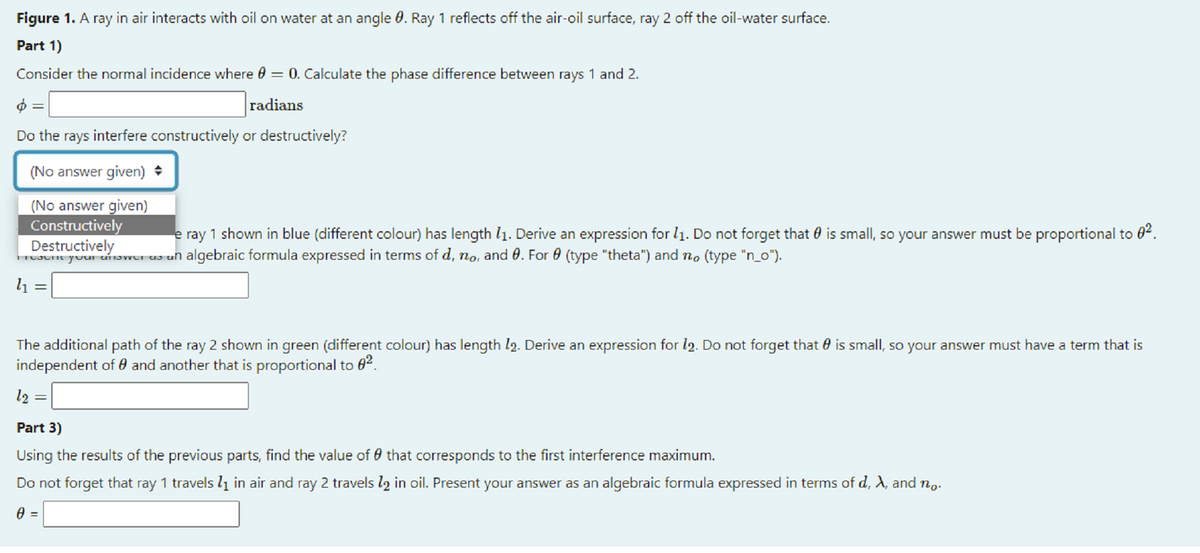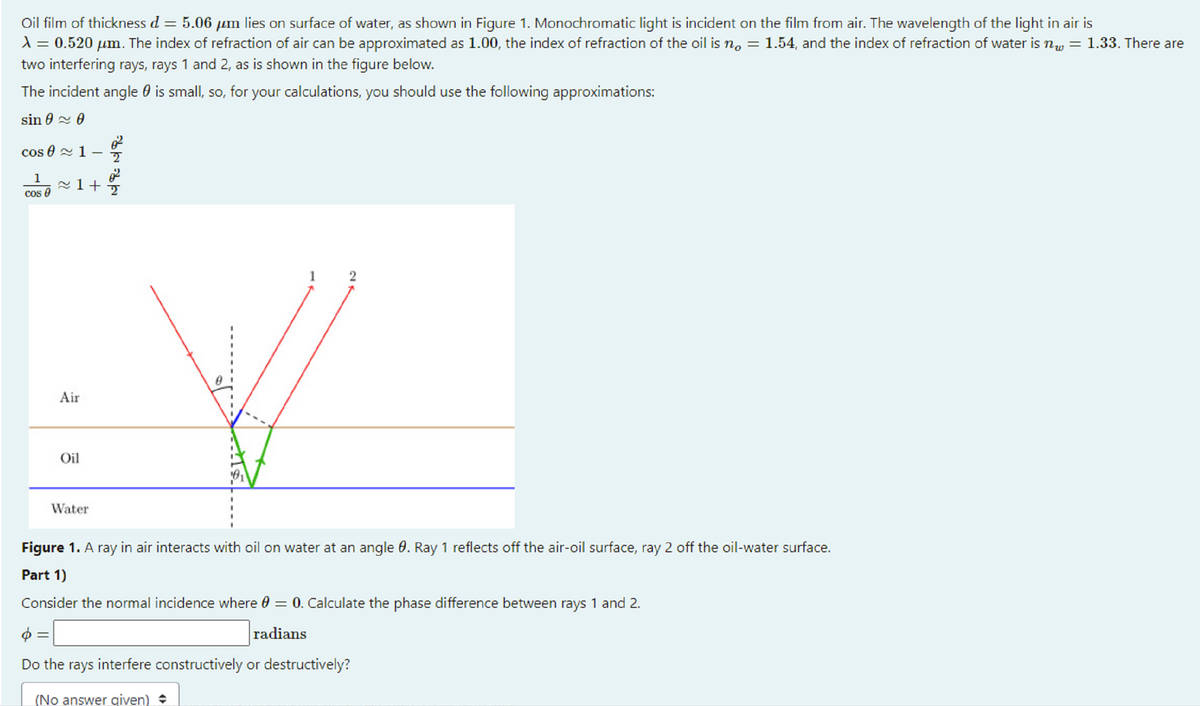Oil film of thickness d = 5.06 um lies on surface of water, as shown in Figure 1. Monochromatic light is incident on the film from air. The wavelength of the light in air is X = 0.520 µm. The index of refraction of air can be approximated as 1.00, the index of refraction of the oil is n, = 1.54, and the index of refraction of water is nu = 1.33. There are two interfering rays, rays 1 and 2, as is shown in the figure below. The incident angle 0 is small, so, for your calculations, you should use the following approximations: sin 0 x 0 cos 0 2 1- e 1+ cos 0
Oil film of thickness d = 5.06 um lies on surface of water, as shown in Figure 1. Monochromatic light is incident on the film from air. The wavelength of the light in air is X = 0.520 µm. The index of refraction of air can be approximated as 1.00, the index of refraction of the oil is n, = 1.54, and the index of refraction of water is nu = 1.33. There are two interfering rays, rays 1 and 2, as is shown in the figure below. The incident angle 0 is small, so, for your calculations, you should use the following approximations: sin 0 x 0 cos 0 2 1- e 1+ cos 0
Related questions
Question

Transcribed Image Text:Figure 1. A ray in air interacts with oil on water at an angle 0. Ray 1 reflects off the air-oil surface, ray 2 off the oil-water surface.
Part 1)
Consider the normal incidence where 0 = 0. Calculate the phase difference between rays 1 and 2.
radians
Do the rays interfere constructively or destructively?
(No answer given) +
(No answer given)
Constructively
Destructively
e ray 1 shown in blue (different colour) has length l1. Derive an expression for l1. Do not forget that 0 is small, so your answer must be proportional to 0².
your anovrer us un algebraic formula expressed in terms of d, no, and 0. For 0 (type "theta") and no (type "n_o").
l1
The additional path of the ray 2 shown in green (different colour) has length l2. Derive an expression for l2. Do not forget that 0 is small, so your answer must have a term that is
independent of 0 and another that is proportional to 82.
l2 =
Part 3)
Using the results of the previous parts, find the value of 0 that corresponds to the first interference maximum.
Do not forget that ray 1 travels lį in air and ray 2 travels l2 in oil. Present your answer as an algebraic formula expressed in terms of d, X, and no.

Transcribed Image Text:Oil film of thickness d = 5.06 µm lies on surface of water, as shown in Figure 1. Monochromatic light is incident on the film from air. The wavelength of the light in air is
1 = 0.520 µm. The index of refraction of air can be approximated as 1.00, the index of refraction of the oil is n, = 1.54, and the index of refraction of water is nw = 1.33. There are
two interfering rays, rays 1 and 2, as is shown in the figure below.
The incident angle 0 is small, so, for your calculations, you should use the following approximations:
sin 0 2 0
cos 0 2 1-
1
cos 0
1
2
Air
Oil
Water
Figure 1. A ray in air interacts with oil on water at an angle 0. Ray 1 reflects off the air-oil surface, ray 2 off the oil-water surface.
Part 1)
Consider the normal incidence where 0 = 0. Calculate the phase difference between rays 1 and 2.
radians
Do the rays interfere constructively or destructively?
(No answer given)
Expert Solution
This question has been solved!
Explore an expertly crafted, step-by-step solution for a thorough understanding of key concepts.
Step by step
Solved in 2 steps with 2 images
